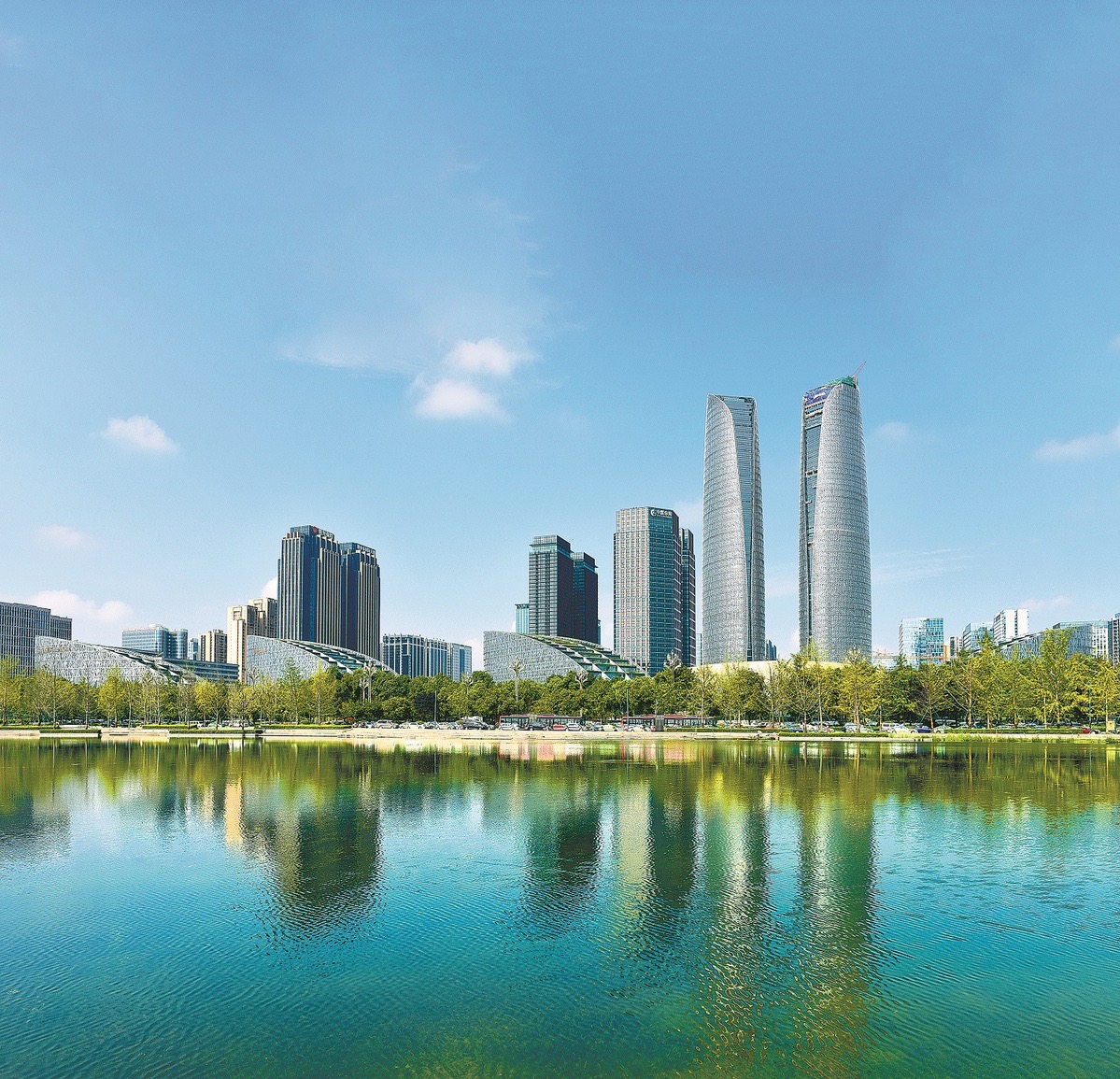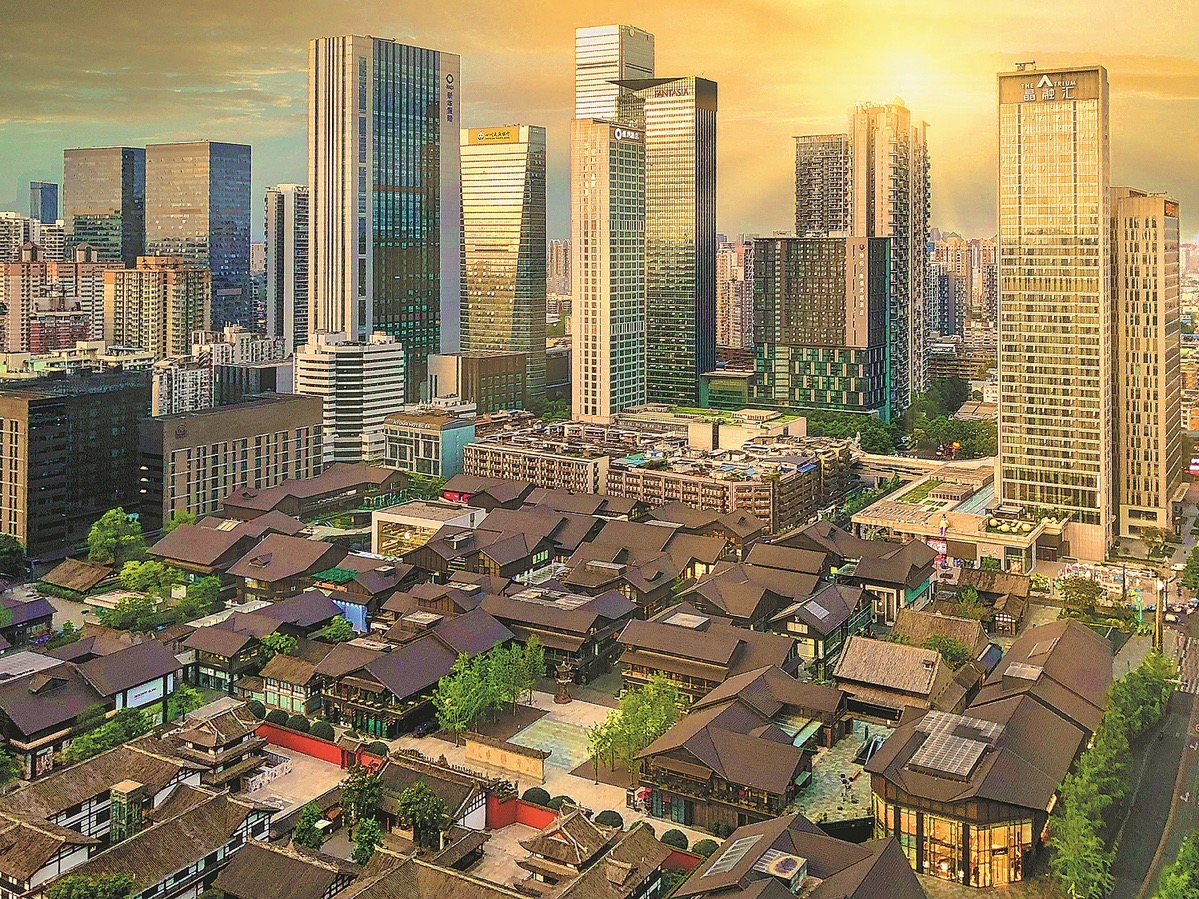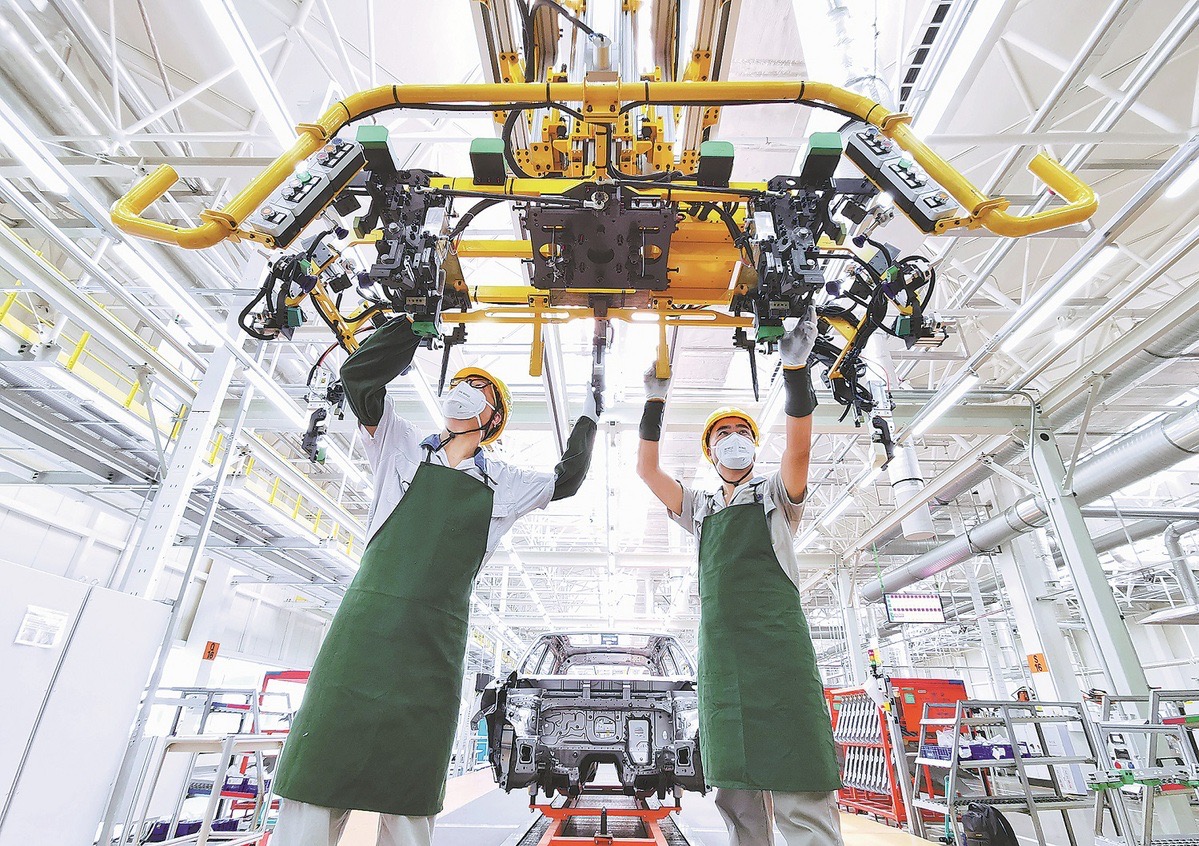By SONG MENGXING
City is a heavy hitter on world stage thanks to iconic wildlife and bustling economy
Giant panda, one of the best-known symbols of Chinese culture worldwide, is a powerful ambassador for Chengdu. The Hollywood movie series Kung Fu Panda selected Chengdu as the backdrop to film distinct local elements and the panda character, Po, has become a DreamWorks icon.
Sichuan province in Southwest China is home to giant pandas. According to the country's fourth giant panda survey, there were 1,387 wild pandas in Sichuan, accounting for 74.4 percent of the country's total. The provincial capital, Chengdu, with a permanent population of more than 21 million and an area of about 14,335 square kilometers, is a metropolis that boasts both captive and wild pandas.
The Chengdu Research Base of Giant Panda Breeding, which is located in the northern suburbs of Chengdu, houses more than 230 giant pandas and has the largest artificial breeding population of giant pandas in the world. Currently, 24 pandas from the base are involved in international scientific research cooperation in six countries — Japan, the United States, Spain, France, Germany and Denmark.
The base was established in 1987, starting with six sick and hungry animals rescued from the wild. It has been carrying out scientific research and mastered the world's leading core technology of giant panda breeding and cultivating. It has developed into a world-renowned giant panda center for protection, scientific research and breeding, related education and tourism.
The mascot of the Chengdu FISU World University Games, Rongbao, was designed based on a giant panda named Zhima from the research base. Zhima has a small black spot beside its nose, as if it had just eaten sesame stealthily without wiping its mouth.

In August 2020, after a global vote, Zhima was elected as the real-life image of the Chengdu FISU Games mascot Rongbao. There are few large international sports events that have mascots based on real animals but Rongbao is one of them.
Cultural and creative products developed from Rongbao have gained much attention and become top products that people have been eager to buy.
In addition to the Chengdu Research Base of Giant Panda Breeding, there are two panda bases in Dujiangyan city under the administration of Chengdu: the Panda Valley, a center that trains pandas to live in the wild; and the Dujiangyan base of the China Conservation and Research Center for the Giant Panda.
Chengdu is also an important natural habitat for wild pandas. The Chengdu area of the Giant Panda National Park is a key corridor hub for the gene introgression of the giant panda populations in Qionglai Mountains and Minshan Mountains. The country's fourth giant panda survey showed that 73 wild pandas lived in the area.
For Sichuan and Chengdu, pandas do not just exist in a panda base or the wild, but are integrated into the local culture in the form of sculptures, dolls, restaurants and even the front of buses that look like a panda's face. Walking in Chengdu, you can always see various kinds of panda-related objects.

A general introduction
Chengdu is a city with a profound civilization of about 4,500 years and an urban history of some 2,300 years. Located to the east of the Qinghai-Tibet Plateau and in the west of the Sichuan Basin, Chengdu can see snow-capped mountains more than 5,000 meters high.
Chengdu is the city with the largest altitude drop — 5,005 meters — in the world. Its highest elevation is situated on Daxuetang, Dayi county, at an altitude of 5,364 meters; the lowest is in Jianyang city, at an altitude of 359 meters.

Biodiversity
As a city rich in biodiversity, Chengdu has 3,139 species of higher-level wild plants and 753 species of wild animals. They include four plant species and 29 animal species under first-class national protection. It has rare plants such as Cystoathyrium chinense Ching and animals such as golden monkeys and a special kind of antelope.
The Chengdu part of Giant Panda National Park covers an area of about 1,459 sq km, boasting about 90 percent of the park's terrestrial wild animal species and 85 percent of its seed plant species.
Chengdu has a strong economy. Its regional GDP exceeded 2.08 trillion yuan ($288.76 billion) in 2022, ranking seventh among China's cities. It is a nationally central city and a core part of the Chengdu-Chongqing economic circle. The city boasts two 1-trillion-yuan industries of electronic information and equipment manufacturing; and 10 100-billion-yuan industry clusters, including biomedicine and aerospace. It is also expanding new sectors including precision medicine, brain-inspired intelligence and quantum computing.
Approximately 50 percent of the world's laptop chips are packaged and tested in Chengdu and 20 percent of notebook computers are manufactured in the city.

Opening-up and transport
The location of Chengdu makes it an important node in the Belt and Road Initiative and the Yangtze River Economic Belt. It has the unique advantages of connecting southwestern and northwestern China and connecting East Asia with Southeast and South Asia. The city is making every effort to build itself into an international hub and is accelerating the process of becoming a well-developed inland area in terms of opening-up and reform.
In 2022, Chengdu had economic and trade links with 228 countries and regions around the world, and its total import and export of goods reached 834.64 billion yuan that year. Among them, total exports were worth 500.51 billion yuan and imports amounted to 334.13 billion yuan. Chengdu remains a large foreign trade city in western China.
Chengdu is the third city on the Chinese mainland to have two international airports. Chengdu Shuangliu International Airport and Chengdu Tianfu International Airport operate in coordination with each other.
It has established a network system of international freight train services, connecting Chengdu to Europe and Asia. In 2022, international freight trains transported goods more than 5,000 times, and cumulatively more than 22,000 times, connecting to 100 overseas cities.
The Chengdu International Railway Port hopes to promote trade development, the gathering of industries, regional cooperation and cultural exchanges. It aims to establish an industrial system involving logistics, trade and port-related industries.
The Chengdu Qingbaijiang railway port area of China (Sichuan) Pilot Free Trade Zone covers an area of 9.68 sq km and mainly fosters port services such as logistics and warehousing, auto imports, special finance and also modern services including information, and conventions and exhibitions.
By the end of 2022, Chengdu opened 131 air routes to overseas regions, ranking fourth nationally. Its role as an air gateway to Europe and the Association of Southeast Asian Nations is increasingly prominent. In 2022, the passenger throughput of Chengdu's international airports was more than 31.09 million, ranking first in China.

(CHINADAILY)
 简体中文
简体中文

